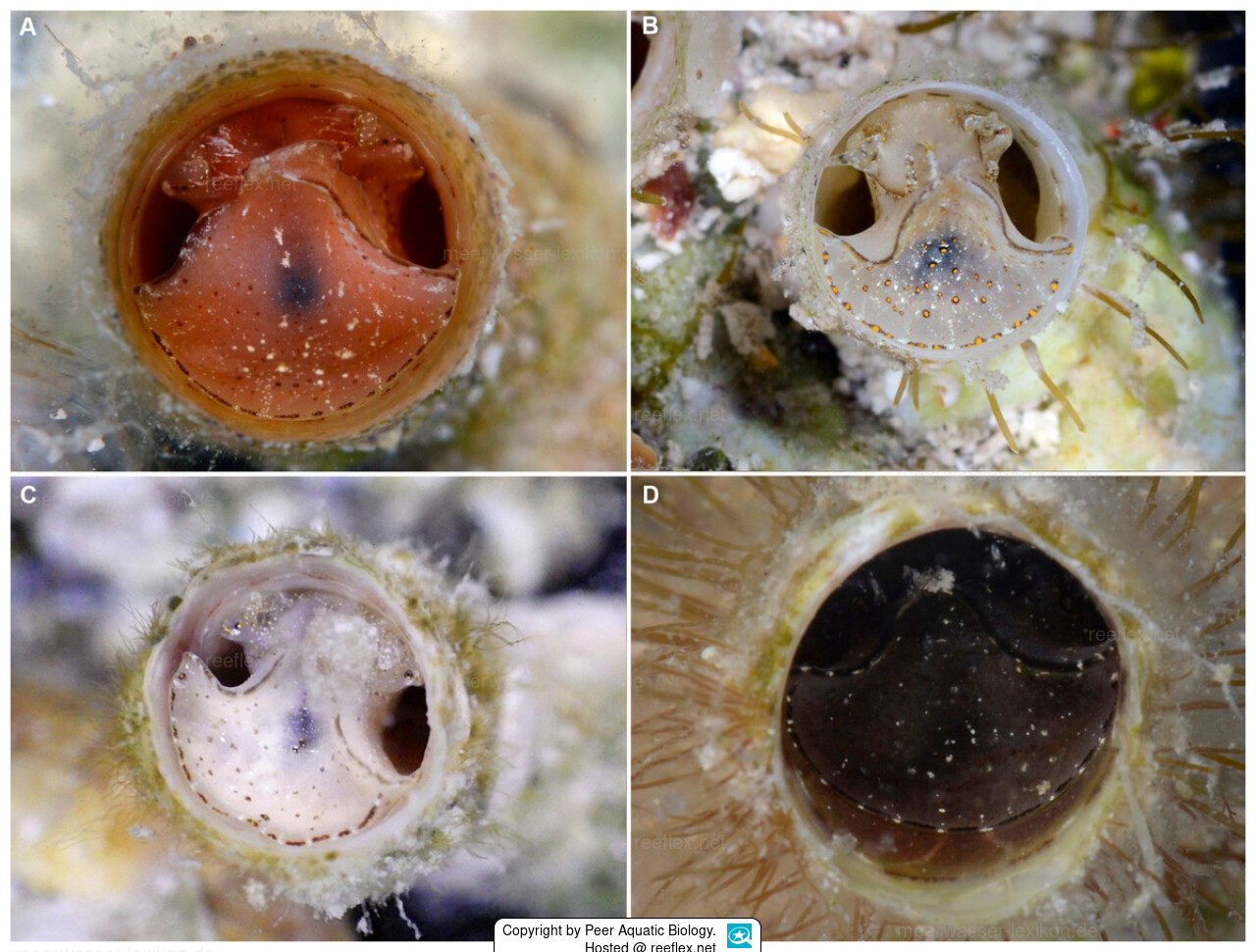Info
Lat was first discovered in the waters around the Bahamas and later in the Florida Keys.
In the sea, there is only one rule: eat or be eaten; a daily struggle for survival that millions of marine creatures face.
In order to avoid being among the losers in this fight, the sea creatures have developed various survival strategies, more or less helpful, to ensure their survival:
- active use of poisons
- passive use of (nettle) poisons (example anemone fish)
- development of tanks, bowls, spines and mucus cocoons
- mimicry, and mimosa (camouflage)
- association with sea giants (mackerel and whale sharks)
- use of ink
- use of a chemical club
just to name a few examples.
What do the vast majority of sessile worm snails do?
In the course of evolution, worm snails have not only developed a fixed living tube, but have also created a way to close the tube opening with the help of an operculum.
But: exceptions prove the rule:
members of the genus Thylacodes are non-operculate marine worm snails. They have NOT developed an operculum in the course of evolution and yet they manage to protect themselves more or less successfully.
Dr. Rüdiger Bieler is one of the scientists who has recently found a whole series of new worm snails around Florida and the Caribbean that do not have a protective operculum.
“They have some nasty metabolites in their mucus. That might also explain why they are able to have exposed heads - in the reef, everyone is out to eat you, and if you don't have defenses, you'll get overgrown by the corals and sea anemones and all the stuff around you.”
See report under related link.
Our oceans and their inhabitants never cease to amaze us with new strategies and should be protected comprehensively.
Color morphs: beige, orange, dark
Literature reference:
Bieler et al. (2017), Non-native molluscan colonizers on deliberately placed shipwrecks in the Florida Keys, with description of a new species of potentially invasive worm-snail (Gastropoda: Vermetidae).
PeerJ 5:e3158; DOI 10.7717/peerj.315
Creative Commons Attribution 4.0 InternationalLiterature source:
In the sea, there is only one rule: eat or be eaten; a daily struggle for survival that millions of marine creatures face.
In order to avoid being among the losers in this fight, the sea creatures have developed various survival strategies, more or less helpful, to ensure their survival:
- active use of poisons
- passive use of (nettle) poisons (example anemone fish)
- development of tanks, bowls, spines and mucus cocoons
- mimicry, and mimosa (camouflage)
- association with sea giants (mackerel and whale sharks)
- use of ink
- use of a chemical club
just to name a few examples.
What do the vast majority of sessile worm snails do?
In the course of evolution, worm snails have not only developed a fixed living tube, but have also created a way to close the tube opening with the help of an operculum.
But: exceptions prove the rule:
members of the genus Thylacodes are non-operculate marine worm snails. They have NOT developed an operculum in the course of evolution and yet they manage to protect themselves more or less successfully.
Dr. Rüdiger Bieler is one of the scientists who has recently found a whole series of new worm snails around Florida and the Caribbean that do not have a protective operculum.
“They have some nasty metabolites in their mucus. That might also explain why they are able to have exposed heads - in the reef, everyone is out to eat you, and if you don't have defenses, you'll get overgrown by the corals and sea anemones and all the stuff around you.”
See report under related link.
Our oceans and their inhabitants never cease to amaze us with new strategies and should be protected comprehensively.
Color morphs: beige, orange, dark
Literature reference:
Bieler et al. (2017), Non-native molluscan colonizers on deliberately placed shipwrecks in the Florida Keys, with description of a new species of potentially invasive worm-snail (Gastropoda: Vermetidae).
PeerJ 5:e3158; DOI 10.7717/peerj.315
Creative Commons Attribution 4.0 InternationalLiterature source:







 Peer Aquatic Biology
Peer Aquatic Biology












